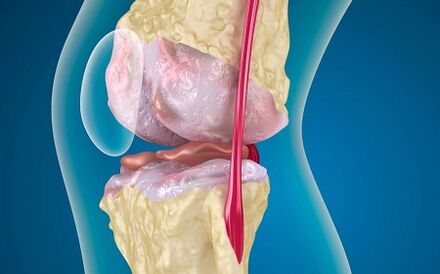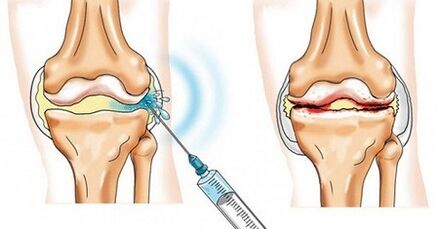
It will be about such an unpleasant disease of a muscle-bone system as a knee joint arthrosis.From the article you can find out what disease, why it occurs, which are the main symptoms of the arthrosis of the knee and how to treat this insidious disease.
Arthrosis of the shared knee (second name - gonartrosis) is a chronic knee joint, in which the joint destruction of the articulated cartilage, and then the deformation of the common and restricting of motor activities in it, is called.
Gonartost is the most common type of arthrosis.The most common disease is diagnosed with people aged 40 years and older.In an older age group, the arthrosis of the knees are more often in women, among the younger patients, the disease is more common in men.In approximately 7% of cases, disease leads to disability development.
Reasons
The main causes of disease development are:
- Breach of metabolism in the body;
- surplus weight, leading to increasing cargo on knee joints;
- Increased fragility of capillaries, various circulatory disorders;
- Knee joint injuries (cracks, fractures, rubies meniscus, ligaments);
- some endocrine diseases;
- inflammatory compounds (arthritis, rheumatism);
- old injuries that were wrong cured;
- Traumatic Sport Classes for Knee (Heavy Athletics, Bodybuilding, Football, Gymnastics, Tennis, Athletics);
- hereditary predisposition;
- Congenital anomalies of the structure of the knee joint.
Types of arthrosis
The following types of arthrosis vary by origin:
- primary- most often occurs in older people, are at risk patients with obesity;
- secondary- develops after the injuries of knees or contagious diseases that are wrongly cured.
According to the localization of the pathological procedure, the following types of knee arthrosis are abolished:
- Left- affects the left joint of the knee, it is most often noticed in athletes and medium patients with obesity;
- Right- affects the right of the knee joint, it is more often in athletes and people whose work is associated with increased dynamic and static loads on the right leg;
- bilateral- The largest type of knee joint arthrosis, which can lead to disability, is most often found in older people.
Symptoms
The main clinical signs of the disease are:
- Holder pain - Initially, sickening physical efforts appear, motion, long walking after a long sleep, starts to move, the patants descending down the stairs, the knee pain becomes permanent;
- Morning numbness in common knees - lasts about half an hour, over time, the duration can increase;
- Crunch in the knee when moving;
- With the development of inflammatory process, patients complain about the sense of weight in the knee, the wrist is a little swelling and increases in size;
- The form of the wrist gradually changes, its deformation appears;
- With further development of the disease, chromost appears, the movements in the knee joints are limited, the patient cannot completely print a painful leg;
- Attrophy of feminine muscles gradually develops, become weak and flabby, reducing volume.
Treatment
When the first unpleasant symptoms occur, you must immediately contact your doctor and pass the exam.Timely treatment will increase the chances of recovery and improve forecasts.Self-help is unacceptable and can lead to a series of complications, to disability!
Treatment of the knee arthrosis includes the following phases.
Inadequate therapy
- A painful date should be provided with a vacation, so crutches or bins use for unloading;
- Ultraviolet radiation, heat - to remove pain;
- Wearing special orthopedic shoes, knee pads, special roles;
- Massage, exercise therapy, physiotherapy - are prescribed after stopping the acute phase of the disease.
Drug therapy

- NSAID reception within (tablets) and externally (gels, fats) - to relieve the inflammation and knee pain;
- Injections of special medications in the common cavity - are carried out in the absence of the effect of NSAID;
- Slow system systems - for normalization of metabolic processes in cartilage tissue;
- It means improving blood circulation - contributions to the normalization of blood circulation in the pathological focus and improving the delivery of medicines in the damage zone.
Surgical intervention
It is displayed with a complete loss of a common function and includes the hitch joint prosthetics.
Health to you and your loved ones!























